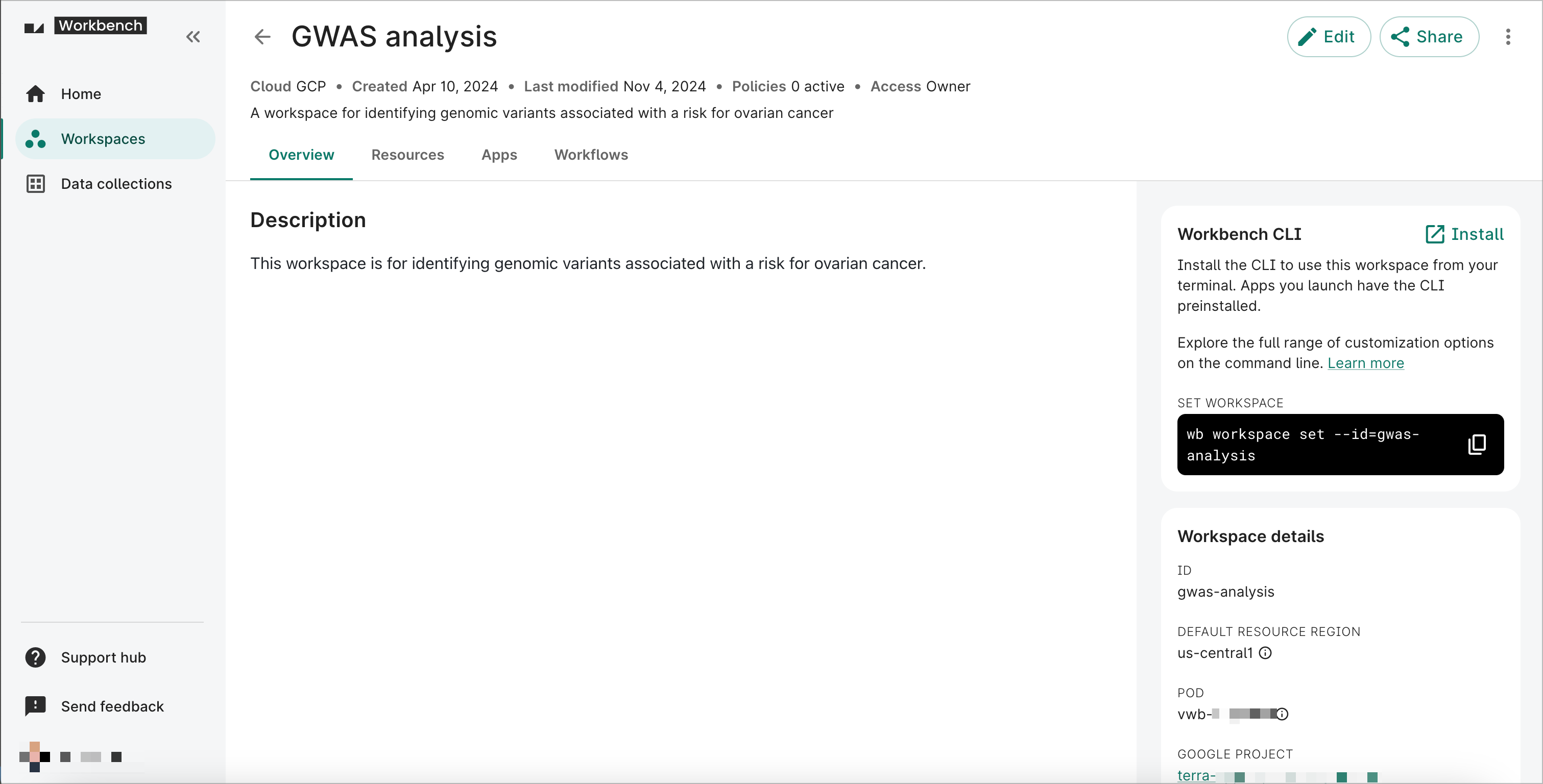Workspaces overview
Categories:
Purpose: This document provides a high-level understanding of what role workspaces play in Verily Workbench.
What are workspaces and what capabilities do they provide?
Workspaces are where researchers and teams connect, collaborate, and organize all the elements of their research, including data, documentation, code, and analysis. Workspaces are also a way for data and tool providers to deliver data and tools to researchers, along with helpful resources such as documentation, code, and examples.
Web user interface vs. command-line interface
The Verily Workbench web user interface provides point-and-click access to workspace contents and operations. It presents workspace contents and related actions through four separate panes, named Overview, Resources, Apps, and Workflows.

The Overview pane contains an editable description of the workspace, as well as workspace details and information to install the Workbench CLI to use the workspace from your terminal.
The Resources and Apps panes provide access to data resources and computational apps, respectively, with which you can perform analysis work in Workbench.
- For more information about Resources, see Data resources overview.
- For more information about Apps, see the Cloud Apps documentation.
The Workflows pane lets you add, run, and monitor workflows after they have been added to the workspace.
- For more information about Workflows, see the Workflows documentation.
You can also control and manage workspaces and their contents from the Workbench command-line interface (CLI). Any operations you perform using the CLI will be reflected in the web UI, and vice versa.
To learn more about performing workspace operations through the Workbench CLI, see the Command Line Interface documentation.
Workspace operations
You can perform the following operations on workspaces from within the web UI:
- List your workspaces
- Create a new workspace
- Edit a workspace's description
- Share a workspace
- Duplicate (clone) a workspace
- Delete a workspace
For complete instructions on how to perform these operations through the web UI, see the Workspace Operations page.
For equivalent CLI instructions, see the Command Line Interface documentation.
Access control and sharing options
Workspaces in Workbench are designed to facilitate secure collaboration. When you share a workspace with a collaborator, you can choose what level of access to grant them (Owner, Writer, or Reader), which corresponds to a specific set of privileges.
In addition, there are certain important considerations around access to workspace resources that come into play when you or your collaborators share or duplicate workspaces.
To learn more about these topics, please see the Access Control and Sharing page.
Last Modified: 12 November 2024